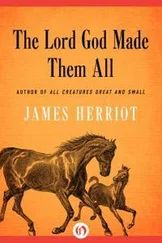Praise for The Source “Fascinating … Stunning … A wonderful rampage through history.”— The New York Times “A sweeping chronology filled with excitement—pagan ritual, the clash of armies, ancient and modern: the evolving drama of man’s faith.”— The Philadelphia Inquirer “Magnificent… A superlative piece of writing both in scope and technique. It is, in fact, one of the great books of this generation…. It will hold the interest of any reader, no matter what religion he may be.”— San Francisco Call-Bulletin “While he fascinates and engrosses, Michener also educates.”— Los Angeles Times “Michener is a superb storyteller.”— Business Week
JAMES A. MICHENER, one of the world’s most popular writers, was the author of the Pulitzer Prize-winning Tales of the South Pacific , the bestselling novels Hawaii, Texas, Chesapeake, The Covenant , and Alaska , and the memoir The World Is My Home. Michener served on the advisory council to NASA and the International Broadcast Board, which oversees the Voice of America. Among dozens of awards and honors, he received America’s highest civilian award, the Presidential Medal of Freedom, in 1977, and an award from the President’s Committee on the Arts and Humanities in 1983 for his commitment to art in America. Michener died in 1997 at the age of ninety.
ALSO BY JAMES A. MICHENER Tales of the South Pacific
The Fires of Spring
Return to Paradise
The Voice of Asia
The Bridges at Toko-Ri
Sayonara
The Floating World
The Bridge at Andau
Hawaii
Report of the County Chairman
Caravans
Iberia
Presidential Lottery
The Quality of Life
Kent State: What Happened and Why
The Drifters
A Michener Miscellany: 1950–1970
Centennial
Sports in America
Chesapeake
The Covenant
Space
Poland
Texas
Legacy
Alaska
Journey
Caribbean
The Eagle and the Raven
Pilgrimage
The Novel
The World Is My Home: A Memoir
James A. Michener’s Writer’s Handbook
Mexico
Creatures of the Kingdom
Recessional
Miracle in Seville
This Noble Land: My Vision for America
With A. Grove Day:
Rascals in Paradise
With John Kings:
Six Days in Havana
ACKNOWLEDGMENTS
The translations of Psalm 6 and of Proverbs 31 are from Samuel Sandmel, The Hebrew Scriptures, An Introduction to Their Literature and Religious Ideas (New York, Alfred A. Knopf, 1963). Psalm 33 was specially translated by Dr. Sandmel. The Psalms of Ascent were translated for this book by scholars in Israel.Other Biblical quotations are from the King James Version, except the words of St. Paul, which are taken from II Timothy 4:7–8 in the Revised Standard Version, and those passages from Deuteronomy specifically noted, which are from The Torah, the Five Books of Moses. A new translation of The Holy Scriptures according to the Masoretic Text (Philadelphia, The Jewish Publication Society of America, 1962).The response which appears has been adapted with permission from Rabbi Ephraim Oshry, Responsa from the Depths (Brooklyn, 1959).Archaelogical drawings used throughout the book are the work of Ruth Ovadia, research scholar in the Department of Archaeology, Hebrew University, Jerusalem. Four of these drawings were adapted from illustrations in The Guide to Israel , by Zev Vilnay (Jerusalem, 1963).Certain Jewish documents are cited from C. K. Barrett, The New Testament Background: Selected Documents (New York, Harper and Brothers, 1961).Direct quotations from the sayings of Rabbi Akiba have been adapted either from the tractate Pirke Abot of the Mishna or from the excellent life by Louis Finkelstein, Akiba, Saint, Scholar and Martyr (reprinted by arrangement with World Publishing Co., New York—A Meridian Book).Quotations from and references to the Pirke Abot tractate of the Mishna are taken principally from Judah Goldin, The Living Talmud (New York, The New American Library, 1957).Quotations from and references to the Babylonian Talmud are taken principally from Leo Auerbach, The Babylonian Talmud (New York, Philosophical Library, 1944).Quotations from and references to the Jerusalem Talmud are taken principally from Dagobert Runes, The Talmud of Jerusalem (New York, Philosophical Library, 1956).Quotations from Maimonides have been for the most part adapted from Leon Roth, The Guide for the Perplexed: Moses Maimonides (London, Hutchinson’s University Library, 1947).For the list which opens the second section of Level III, I am indebted to Professor Cecil Roth of Jerusalem, who drew my attention to the fact that a list like this originally appeared in a little-known work, Wolf’s Jews in the Canary islands. Roth’s version of this list appears in his History of the Marranos , by Cecil Roth (reprinted by arrangement with World Publishing Co., New York—A Meridian Book).Details of Judenstrasse life appearing in the third part of Level III are verified principally by Marvin Lowenthal, The Jews of Germany (New York, Longmans, Green, 1936). By permission of David McKay Co., Inc.
Contents
The Tell
The Bee Eater
Of Death and Life
An Old Man and His God
Psalm of the Hoopoe Bird
The Voice of Gomer
In the Gymnasium
King of the Jews
Yigal and His Three Generals
The Law
A Day in the Life of a Desert Rider
Volkmar
The Fires of Ma Coeur
The Saintly Men of Safed
Twilight of an Empire
Rebbe Itzik and the Sabra
The Tell
This is a novel. Its characters and scenes are imaginary except as noted. The hero, Rabbi Akiba, was a real man who died as described in 137 C.E. All quotations ascribed to him can be verified. King David and Abishag, Herod the Great and his family, General Petronius, Emperor Vespasian, General Josephus and Dr. Maimonides were also real persons and quotations ascribed to the last are also verifiable.Akko, Zefat and Tiberias are existing places in the Galilee and descriptions of these towns are accurate, but Makor, its site, its history and its excavation are wholly imaginary.
The Tell
The tell of Makor at site 17072584 in western Galilee as seen by archaeologists on Sunday morning, May 3, 1964, while standing in the olive grove to the south. From the visual appearance of the tell nothing could be deduced as to its genesis, construction or history, except that the uniformly smooth surface of the slope would suggest that at some time around the year 1700 B.C.E. it could have been paved with heavy stone blocks by Hyksos invaders moving against Egypt from the north; and the slight rise toward the eastern side of the tell might indicate that there had once been a building of some size standing at that point.
On Tuesday the freighter steamed through the Straits of Gibraltar and for five days plowed eastward through the Mediterranean, past islands and peninsulas rich in history, so that on Saturday night the steward advised Dr. Cullinane, “If you wish an early sight of the Holy Land you must be up at dawn.” The steward was Italian and was reluctant to use the name Israel. For him, good Catholic that he was, it would always be the Holy Land.
Читать дальше
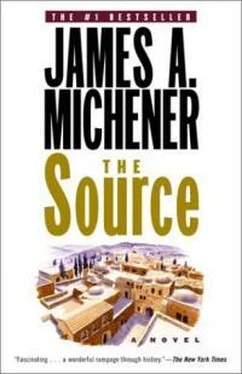
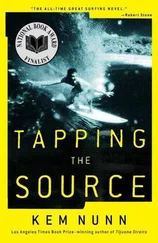


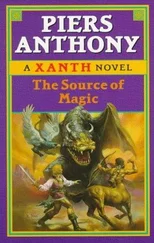
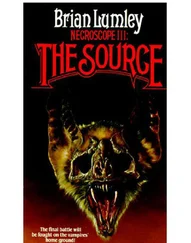
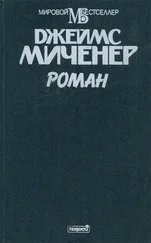
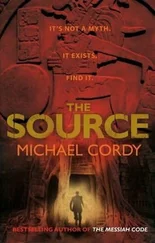
![Джеймс Купер - Пионеры, или У истоков Саскуиханны [The Pioneers, or The sources of the Susquehannah]](/books/395797/dzhejms-kuper-pionery-ili-u-istokov-saskuihanny-t-thumb.webp)
